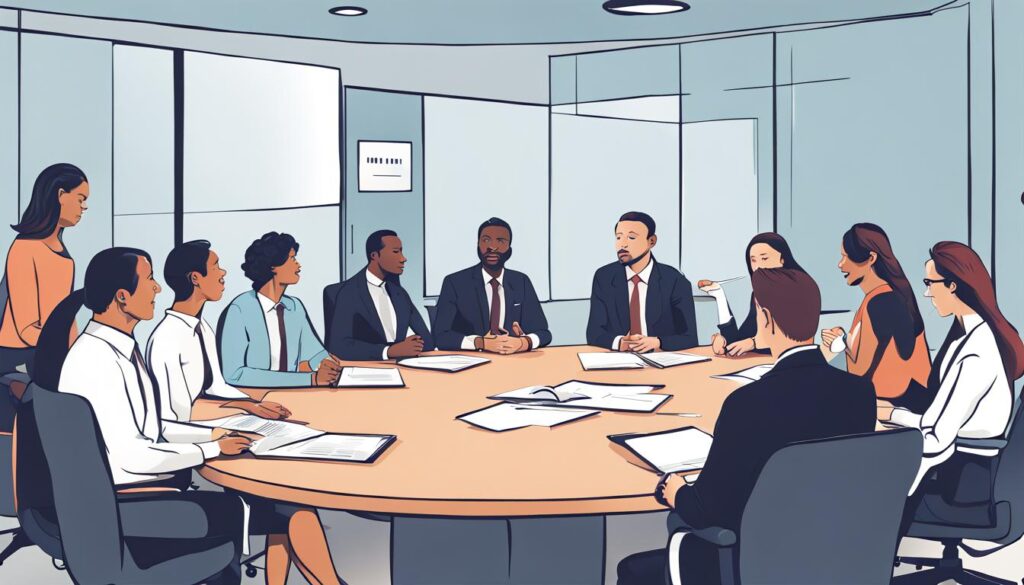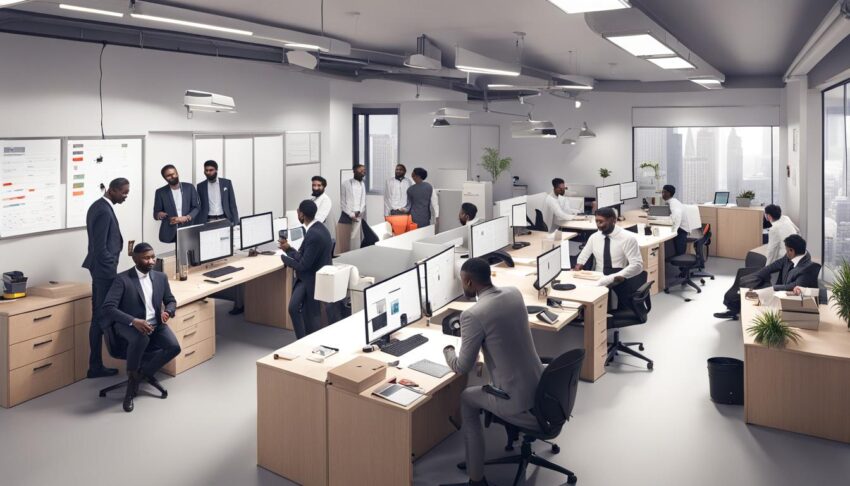ʙʏ Hᴀᴍᴍᴀᴍ Eʟᴍᴀʜɪ
Introduction:
One of the insightful and intriguing concepts, which helps develop successful products or projects is Obeya. It crystallized from other notions like lean management and was crafted by Mr. Takeshi Uchiyamada (内山田 竹志) from Toyota, where he led a project to develop the novel Toyota Prius which is among the early successful hybrid vehicles produced in a high number worldwide.
Obeya is an approach where the development team collaborate faithfully, communicates actively and takes decisions swiftly to achieve specific objectives, by utilising respect, transparency and frequent meetings with overall integration from domain experts and team members, and maintaining conditions of satisfaction.
Obeya is also known as the big room because the team meets every few days (2-3 days) and displays information on the wall for transparency, accountability and tracking progress. The room is open and information is available all the time. For a successful big-room approach, the team should adopt the principles discussed below:
“𝙊𝙣𝙚 𝙨𝙩𝙚𝙥 𝙖𝙩 𝙖 𝙩𝙞𝙢𝙚. 𝙄𝙣 𝙖 𝙮𝙚𝙖𝙧, 𝙮𝙤𝙪’𝙡𝙡 𝙗𝙚 𝙨𝙪𝙧𝙥𝙧𝙞𝙨𝙚𝙙 𝙝𝙤𝙬 𝙛𝙖𝙧 𝙮𝙤𝙪’𝙫𝙚 𝙜𝙤𝙣𝙚.”
Eiji Toyoda, Founder of Toyota
1- Have an agreed-upon objective
Obeya focuses on a clearly defined object communicated to the team, and all the endeavours should aligned to achieve this goal. The critical about Obeya here is the demonstration of the connection between the strategy (business case) and the execution team. To do that the team collaborate and helps one another and performs in harmony to achieve a high level of unity.

2-Visual management
Many researchers say that 65% of the population needs to see information to comprehend and use it, they call them visuals. Obeya uses this fact and adopts information radiators to show information to the team in the big room by using posters, charts and graphs. This will keep people informed and aligned toward the objective, thus from the first glance you can see where you are in the project and what you should do.
𝙄𝙢𝙥𝙧𝙤𝙫𝙚𝙢𝙚𝙣𝙩 𝙢𝙚𝙖𝙣𝙨 𝙙𝙤𝙞𝙣𝙜 𝙨𝙤𝙢𝙚𝙩𝙝𝙞𝙣𝙜 𝙩𝙝𝙖𝙩 𝙬𝙚 𝙝𝙖𝙫𝙚 𝙣𝙚𝙫𝙚𝙧 𝙙𝙤𝙣𝙚 𝙗𝙚𝙛𝙤𝙧𝙚.”
Shoichiro Toyoda, former President of Toyota
3- Embrace teamwork
Besides communication, Obeya adopted a principle of effective teamwork that solves problems collaboratively and improves as a team day by day. Continuous improvement is at the core of Obeya, considering risks of conflicts and disagreements as the root cause of delay. Productivity and value delivery depend on the performing team, hence, clear ground rules of respect, and work ethics are highly adopted.

4- Solve the problem!
Big-room provides a dedicated time and place for problem-solving and coordination, as it is built around reducing blackouts/waste time during project execution. For instance, the A3 technique is utilised to enhance the creativity of the team, because it has the power to summarise solutions in a paper considering A3’s seven steps. As we are in Obeya, it is aligned with a visual solution already adopted.
5- Key Stakeholder engagement (leaders):
Successful execution of Obeya in business requires high management collaboration and engagement, recalling the principles of lean management approach. We need to involve management within our teamwork to ensure consistency and conformance with the organisation’s strategic objective. Obeya is a learning experience not only for the working team but also represents a development opportunity to the hall organisation.

6- Meet in regular intervals:
Another principle in Obeya is a regular meeting that keeps everyone informed. The reason behind that is to share the progress of work against baseline and decide on the next step so that all team members understand the overall situation and react accordingly. this resembles Agile ceremonies of daily standup and retrospective meetings, where the self-organised team discuss how to improve the next iteration and sustain value delivery.
Conclusion:
Obeya or Big-room must be adopted in the beginning to ensure buy-in from the team. Colocation can enhance the overall goal of Obeya, if that is not possible conduct meetings at regular intervals. Some organisations adopt hybrid methodologies then the big room can be selective and challenging at the time, if the team is located in different countries with various time zones then the meetings can be fully virtual, remember to consider the threat of technical and dynamic difficulties the team could in counter when working virtually.


Thank you for the auspicious writeup. It in fact was a amusement account it. Look advanced to far added agreeable from you! By the way, how could we communicate?
Thank you for any other informative blog. Where else may I am getting that type of info written in such a perfect manner? I have a project that I’m simply now working on, and I have been at the glance out for such information.
I have not checked in here for a while since I thought it was getting boring, but the last few posts are good quality so I guess I抣l add you back to my daily bloglist. You deserve it my friend 🙂
I was recommended this web site by my cousin. I’m not sure whether this post is written by him as no one else know such detailed about my problem. You’re amazing! Thanks!